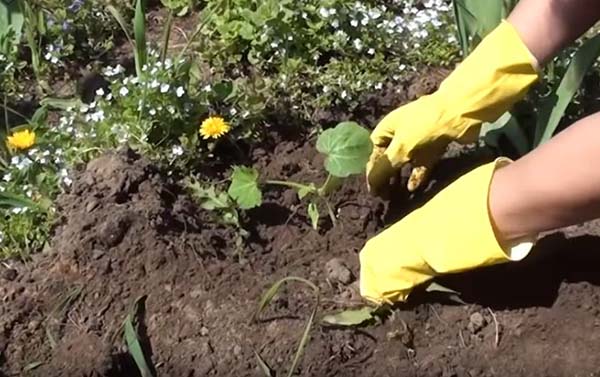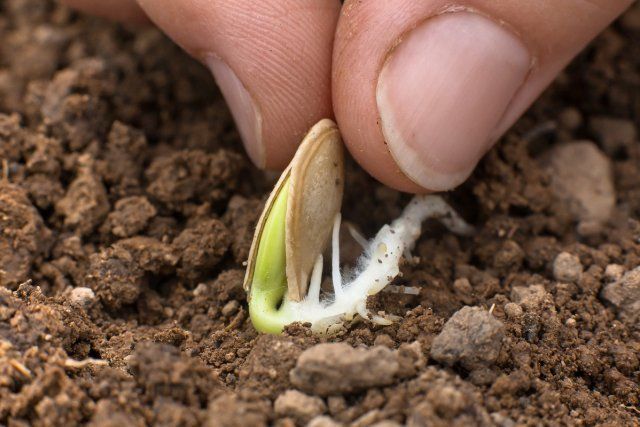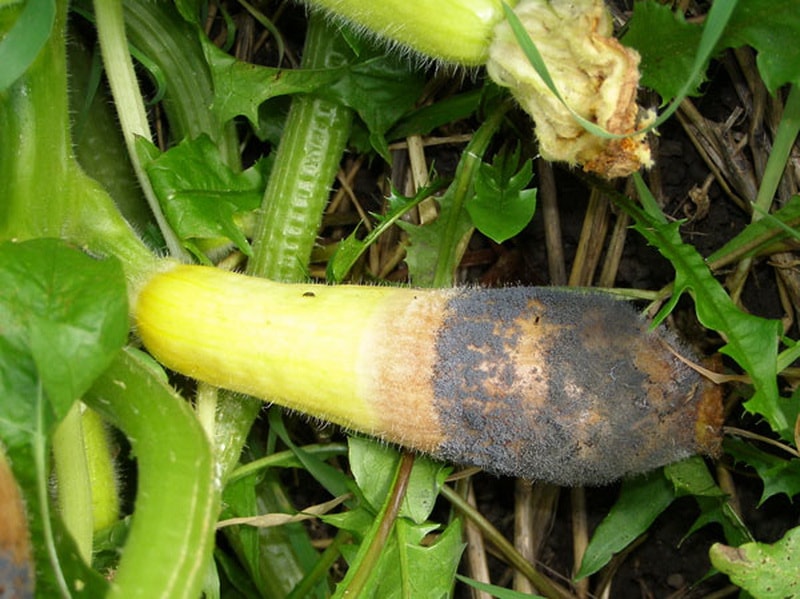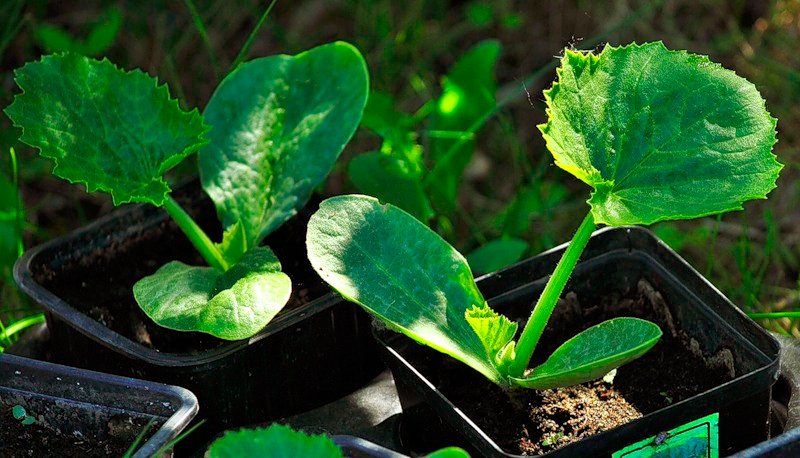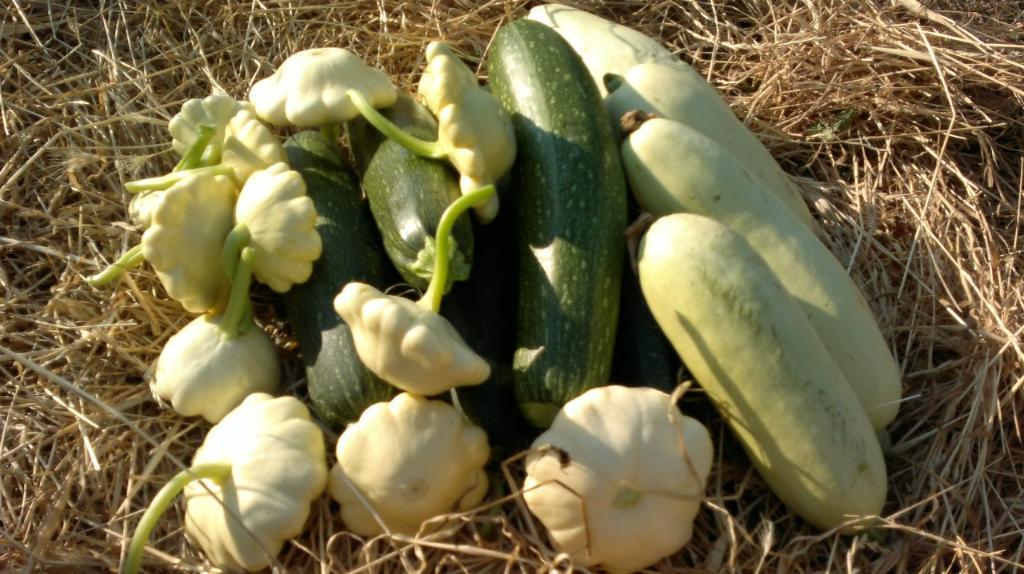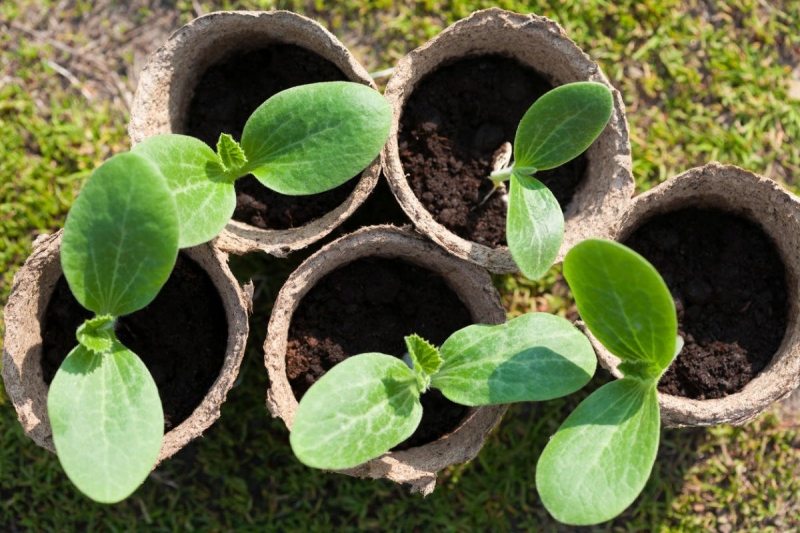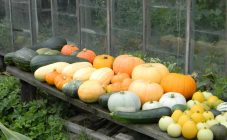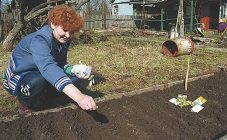Content:
Growing a squash culture is very simple. Even an inexperienced gardener can handle this task. The bush culture is quite unpretentious and resistant to various diseases. That is why zucchini is very fond of farmers from different regions. One bush gives a lot of fruit. How to plant zucchini? Can you do it yourself?
Most gardeners prefer to plant squash in their seed beds, but you can easily grow a vegetable from seedlings. After the seedling gets stronger, it can be transplanted into open ground. Usually, transplants are determined to a new place after 30 days after hatching.
When planting a vegetable in the soil, you need to remember that the squash culture does not like crowding. It is necessary to plant the planting material at a large interval from each other. The distance between the zucchini during planting is 70 cm. Morning is a good time for planting.
It is necessary to ensure that the seedlings in the containers are well pressed by the ground and go to a depth of 2 cm. Fertilizer will need to be applied to each hole.
The nutritional composition consists of:
- 5 g of urea;
- 10 g of potassium chloride;
- 20 g superphosphate;
- half a bucket of humus.
Upon completion of planting work, the plant must be watered with fertilizer. One bush is 2 liters of liquid composition.
How to plant zucchini
How to plant zucchini? This question is asked by many newcomers to farming. Planting vegetables outdoors attracts many farmers. But you should forget about the nuances.
- It is necessary to correctly, and most importantly, choose a place for planting work in advance. You also need to develop a scheme for planting zucchini in the open field. It is advisable to select areas where wind and drafts will not fall. Sunny places on the south side are ideal.
- An important factor in the good development of a plant is the crops that used to grow in this place. For example, squash grows well after cauliflower and early cabbage, onions, garlic, legumes, and corn. It is allowed to plant zucchini if beetroot, cucumber, pumpkin, early potatoes, herbs and spices grew in the selected place earlier. Poor predecessors include late cabbage, tomato, carrot, turnip, eggplant, and pepper.
- How do zucchini grow? There are times when farmers want to plant several crops in the same greenhouse or in the same garden bed. This is allowed, but their overall compatibility must be considered. It is good to plant zucchini next to onions, legumes, herbs, the nightshade family. You can not plant a pumpkin crop next to a melon vegetable, since the plants require the same amount of nutrients.
- It is necessary to select soil rich in humus. Fertile soils with a neutral environment are perfect. Manure is introduced into the soil during digging in the autumn. If necessary, the site can be limestone. If fertilizers were not applied in the fall, you can make a nutrient composition from 10 kg of compost, 50 g of superphosphate and wood ash.
After that, you need to understand how to plant the zucchini correctly.
Then the seeds are planted with the side, as if pecked side down.At what distance is it better to plant zucchini? It is advisable to ensure that there are no more than 2 zucchini per 1 square meter. Planting material can even be planted in wheels. And you can make holes where ash and humus are poured a little. Then everything is mixed with the soil and watered.
Landing time and scheme
In May, they carry out planting work in open ground. But do not forget to cover the beds with foil in order to avoid the appearance of late frosts. If you want to get the harvest a little later, then the sowing will be organized from 1 to 5 June.
Holes are made with an interval of 70-80 cm. In each hole, 2 seeds are sown up to 3 cm deep. If 2 seeds are taken at once, one will need to be transplanted into an adjacent empty hole.
Squash is a type of squash, usually sown at the same time as regular squash, but the ideal time for planting is from May 10 to June 1. Seedlings are grown in April, and already in May 20 they are transferred to the soil. Make holes with an interval of 100 cm. Put 2 seeds in each hole and sprinkle them with earth.
Diseases and pests
Throughout their growth and vegetation, cucumber bushes encounter various diseases and pests. The plant can be attacked by beetles, snails or rodents, especially if the zucchini grows in the open field.
Anthracnose
This is a fungal disease that affects the cucumber crop. It manifests itself as follows: rounded spots are formed on the leaves, which merge with an increase and cover most of the plate. The leaves look like burnt. Over time, they turn brown, dry out and crumble. Weeping spots on the stems. The fruits also suffer, they become wrinkled, and taste bitter.
- To overcome this disease, you need to observe the fruit change.
- Dispose of all post-harvest residues immediately.
- Handle greenhouse frames and wooden trellises in the greenhouse. To do this, you will need to make a product from 200 grams of lime and 10 liters of water.
- At the initial stage of the spread of the infection, you can treat the bushes with Bordeaux liquid.
Ascochitosis
This is another fungal disease. It infects leaves and stems. Gray spots with black dots form on problem areas. The plant dries up and dies in a short time. The fruits also turn black and decompose.
You can fight ascochitis like this:
- Replace contaminated soil.
- Disinfect the seeds before planting.
- The infected areas are treated with a sulfuric acid agent made of copper and chalk in a 1: 1 ratio.
Fruit rot
With this disease, young ovaries rot at the top of the flowers. The reasons for this can be: watering with cold water, low temperature, thickened plantings.
How to fix the problem:
- At the initial stage of the onset of the disease, watering should be reduced.
- Remove diseased and rotten zucchini.
- Treat each bush with the "Barrier" composition. For 1 liter of water there are 3 caps of the product.
Whitefly
Whitefly is considered a polyphagous pest. It affects any plant growing in the garden. The pest settles on the underside of the leaves and fungal infections develop on their secretions. When damaged, the leaves turn black and soon fade.
Wrestling:
- A fungal parasite, Ashersonia, can help. It multiplies in a nutrient medium, and is used in the form of spore suspensions in a millionth in 1 ml. Bushes are sprayed with a similar composition at the rate of 2 liters per 10 square meters for three days a week, it is possible every other day.
- If there are no drugs, the whitefly can be flushed away with water and surface loosening of the soil.
Powdery mildew
It affects the leaves with a fungus. On the underside of the sheet, you can see white spots, the size of which increases over time. The leaves wrinkle and darken. Underdeveloped zucchini grow on the bushes, which have a specific taste.
Wrestling:
- Deep digging in the autumn.
- Alternation of plants.
- Removal of weeds and residues.
- At the initial stage, spraying the bushes with a composition of mullein, in more neglected situations - with colloidal sulfur.
- Burning diseased plants at the end of their development.
It is not difficult to plant zucchini in an open area if the elementary conditions for care are met: correct planting, watering and feeding. Within 1.5 months after flowering, you can wait for the harvest.
